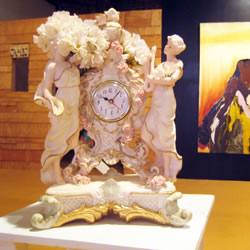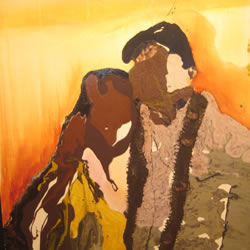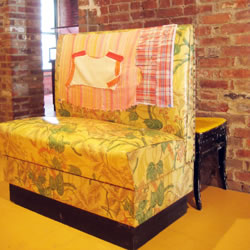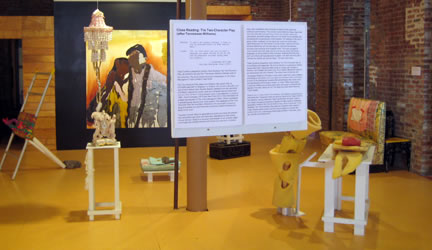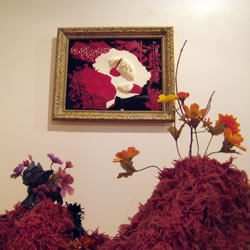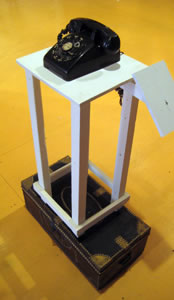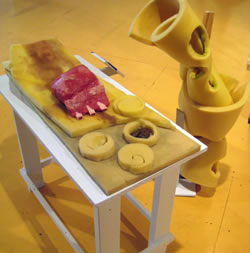

Main Space
Close Reading: The Two-Character Play (April 23 - June 6, 2010)
FELICE: "I won't do lunatic things. I have to try to pretend there is some sanity here."
CLARE: "Oh, is that what you are trying? I thought you were trying to go as far off as possible without going past all limits."
-- Tennessee Williams, from The Two-Character Play (1967)
The Two-Character Play dates from Tennesse Williams' late period. With its minimalist approach to language, its flirtation with absurd narratives, and its use of ironic detachment, it departs markedly from the naturalism of Williams' best known works, A Street Car Named Desire and Cat on a Hot Tin Roof. Critics panned it when it debuted in London in 1967, in Chicago in 1971, and then again in New York in 1973. One dismissed it as a failed reproduction of The Glass Menagerie (1944). Others considered it both obscure and overly explicit. The weakness of the Two-Character Play has long been attributed to the playwright's excessive drug and alcohol use and his broken emotional condition following the death of his lover.
The play unfolds as follows: Felice (a playwright and actor) and Clare (an actress) are a brother and sister who have been abandoned by their acting troupe mid-tour. Stuck in a run-down state theater "in an unknown state," on a stage only partially dressed and containing props from unrelated plays, they nonetheless attempt to deliver a performance. They enact a script written by Felice -- also titled The Two-Character Play and featuring a Felice and a Clare --- about two traumatized, paranoid siblings holed up in the family house decades after witnessing the murder-suicide of their parents. The dialogue in the play is quick, broken, skattered. As the actors dip in and out of their roles, improvising parts not memorized or written, reality and illusion become intertwined and the play begins to resemble the delirious, boundary-less workings of an unstable mind. The actors struggle to communicate with each other and find that the only asset they have -- language -- is poorly suited to their purposes. Believing that the only path out of their self-imposed prison is death, both take their turn with a revolver but neither can pull the trigger. The play never ends.
Triple Candie presented Close Reading: The Two-Character Play as an exhibition-cum-stage-set. The central element was a painting by Seattle-based artst Mark Takamichi Miller. Painted in browns, rust oranges, and green-grey, it was a backlit, abstracted image of an anonymous man and woman. The picture was not painted with Tennessee Williams or the play in mind, and was used in the exhibition -- without Miller's knowledge or permission -- as a surrogate for the absent Felice and Clare. In front of the painting were sculpture-like assemblages that evoked the props and set dressing one might find in an amateur theater, or ersatz, 1980s found-object sculptures. While some of objects had clear references to elements in the play, others did not. (All, except the painting, were destroyed when the show was de-installed.)
What was one to make of all this? The exhibition, like Williams' original play, iwas self-referential. Felice and Clare were obvious stand-ins for Triple Candie's two directors, and by extension, Triple Candie iteself. Similarly, Felice's and Clare's housebound existence spoke to Triple Candie's deliberate geographic isolation from the art world. Most importantly, Close Reading: The Two-Character Play begged two questions often asked of Triple Candie and its shows: Are the nonprofit space's curators also artists in their own continuously improvised exhibition? And when, pray tell, will this show finally end?
